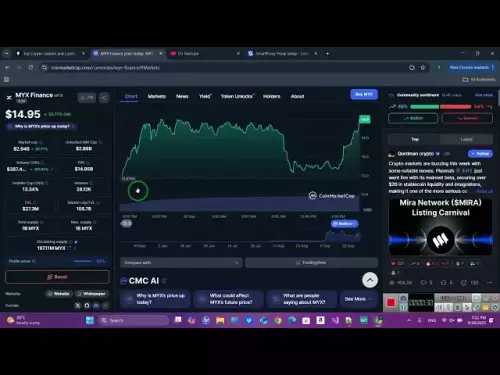-
 bitcoin
bitcoin $109547.008142 USD
0.04% -
 ethereum
ethereum $4011.838726 USD
-0.05% -
 tether
tether $1.000402 USD
-0.01% -
 xrp
xrp $2.798606 USD
0.88% -
 bnb
bnb $970.877944 USD
1.39% -
 solana
solana $202.237275 USD
-0.95% -
 usd-coin
usd-coin $0.999673 USD
0.00% -
 dogecoin
dogecoin $0.229294 USD
-1.15% -
 tron
tron $0.336370 USD
-0.45% -
 cardano
cardano $0.777260 USD
-1.66% -
 hyperliquid
hyperliquid $45.503019 USD
1.73% -
 ethena-usde
ethena-usde $1.000362 USD
0.01% -
 chainlink
chainlink $20.785303 USD
-1.10% -
 avalanche
avalanche $28.755822 USD
-0.11% -
 stellar
stellar $0.358303 USD
-0.48%
What is a BTCUSDT perpetual contract?
Revised sentence:A BTCUSDT perpetual contract is a financial instrument that allows traders to speculate on the price of Bitcoin (BTC) relative to the US dollar (USDT) over an indefinite period, providing flexibility and leverage opportunities.
Oct 22, 2024 at 12:30 am

A BTCUSDT perpetual contract is a financial instrument that allows traders to speculate on the price of Bitcoin (BTC) relative to the US dollar (USDT). It is a type of futures contract that has no set expiration date, meaning traders can hold positions indefinitely or until they decide to close them.
2. Underlying Asset:The underlying asset of a BTCUSDT perpetual contract is the BTC/USDT trading pair, which measures the value of Bitcoin in terms of Tether (USDT), a stablecoin pegged to the value of the US dollar.
3. Perpetual Nature:Unlike traditional futures contracts that have a specific expiration date, BTCUSDT perpetual contracts can be traded indefinitely. Traders can keep their positions open for as long as they desire, allowing them to take advantage of price fluctuations in the BTC/USDT market.
4. Maintenance Margin:Perpetual contracts require traders to maintain a minimum margin balance to keep their positions open. This margin acts as collateral and protects the exchange from potential losses if the price of BTC moves against the trader's position.
5. Funding Rate:BTCUSDT perpetual contracts involve a funding rate mechanism that aligns the prices of perpetual contracts with spot market prices. When the perpetual contract price is higher than the spot price, traders who hold long positions pay a funding rate to traders who hold short positions. This mechanism encourages traders to arbitrage between the two markets.
6. Advantages of Perpetual Contracts:- Leverage: Perpetual contracts allow traders to use leverage, which means they can trade using more capital than they have in their account. However, this also increases their potential losses.
- Flexibility: Perpetual contracts offer flexibility as traders can hold positions indefinitely and close them at any time.
- Liquidity: BTCUSDT perpetual contracts are highly liquid, ensuring that traders can enter and exit positions quickly and efficiently.
- No Expiration: The absence of an expiration date eliminates the risk of contract expiry, providing traders with greater flexibility.
- Market Volatility: The price of BTC is highly volatile, which can lead to significant losses if traders are not careful.
- Liquidation Risks: If the price of BTC moves against a trader's position and the margin balance falls below the required level, their position may be liquidated.
- Unpredictable Funding Rates: Funding rates can be unpredictable and may fluctuate significantly, impacting traders' profitability.
Let's say a trader believes that the BTC/USDT price will rise. They open a long position by purchasing a BTCUSDT perpetual contract with leverage of 10x. If the BTC/USDT price increases by 10%, the trader would have earned a profit of 100% on their initial investment. However, if the price decreases by 10%, the trader would lose 100% of their investment.
Disclaimer:info@kdj.com
The information provided is not trading advice. kdj.com does not assume any responsibility for any investments made based on the information provided in this article. Cryptocurrencies are highly volatile and it is highly recommended that you invest with caution after thorough research!
If you believe that the content used on this website infringes your copyright, please contact us immediately (info@kdj.com) and we will delete it promptly.
- Digital Asset Treasuries, M&A, and the Crypto Berkshire Hathaway: A New Era
- 2025-09-29 02:25:14
- PEPE Price Prediction: Meme Coin Mania or Fading Fad?
- 2025-09-29 03:05:13
- HBAR, Crypto, Buy Now: Decoding the Hype and Finding the Real Gems
- 2025-09-29 03:05:13
- DeepSnitch AI: Your Crypto Fortune Teller for 2025?
- 2025-09-29 02:25:14
- Investors, Ethereum, and Citigroup: Navigating the Crypto Landscape in 2025
- 2025-09-29 03:18:09
- BlockchainFX, Dogecoin, and Crypto Coins: A New York Minute on the Future
- 2025-09-29 02:30:01
Related knowledge
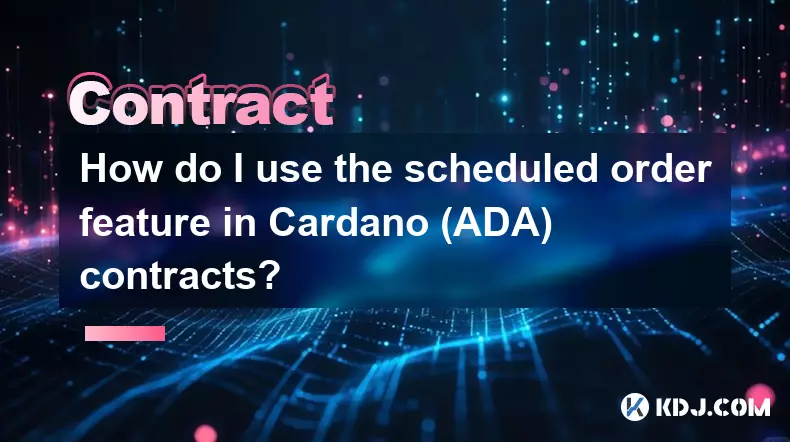
How do I use the scheduled order feature in Cardano (ADA) contracts?
Sep 28,2025 at 10:18pm
Understanding Scheduled Orders in Cardano Smart ContractsCardano operates on a proof-of-stakes consensus mechanism and uses the Plutus scripting langu...

How do I enable the "scalping-only" mode for Cardano (ADA) contracts?
Sep 24,2025 at 03:19am
Understanding Scalping Strategies in Crypto Derivatives1. Scalping in cryptocurrency trading refers to executing multiple short-term trades within min...
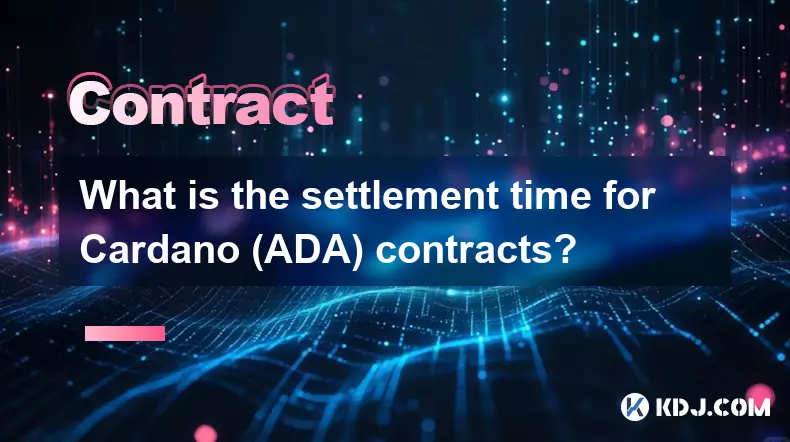
What is the settlement time for Cardano (ADA) contracts?
Sep 28,2025 at 04:18am
Understanding Cardano's Contract Settlement Mechanism1. Cardano operates on a proof-of-stake consensus model known as Ouroboros, which fundamentally i...
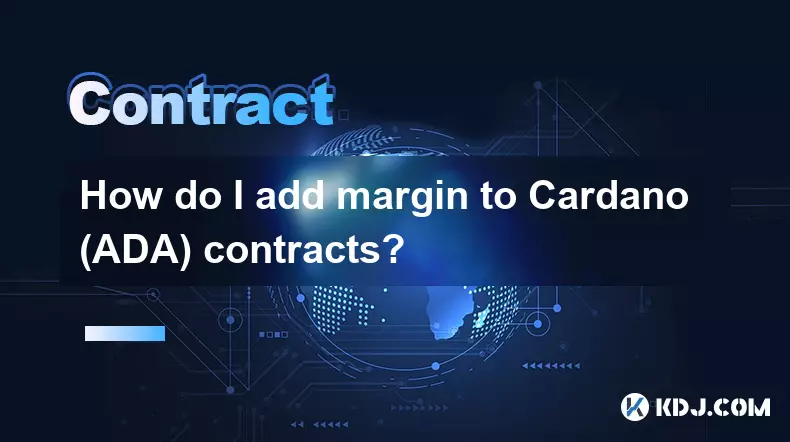
How do I add margin to Cardano (ADA) contracts?
Sep 27,2025 at 07:54pm
Understanding Margin in Cardano (ADA) Smart ContractsCardano operates on a proof-of-stake blockchain that supports smart contracts through its Plutus ...
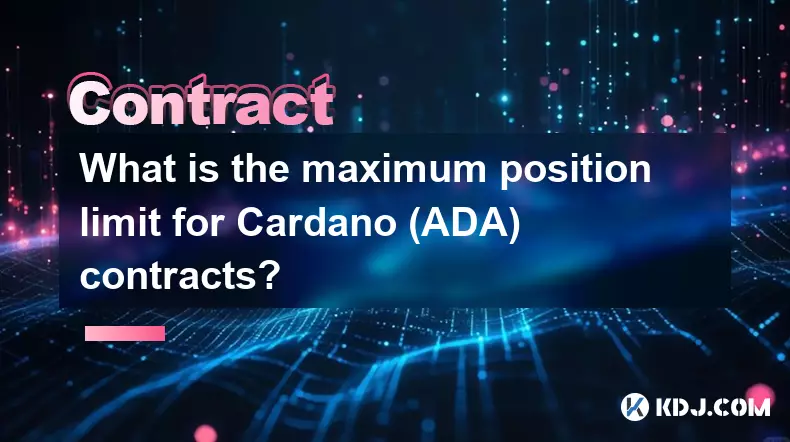
What is the maximum position limit for Cardano (ADA) contracts?
Sep 23,2025 at 11:00pm
Understanding ADA Futures and Derivatives Market Structure1. Cardano (ADA) futures contracts are offered by several major cryptocurrency derivatives e...
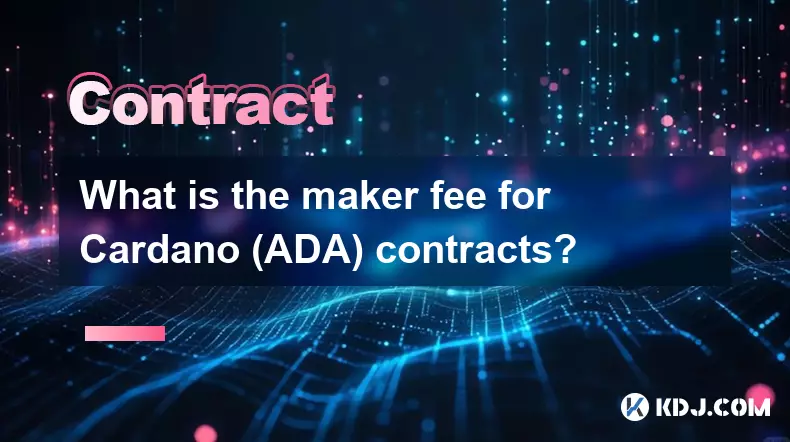
What is the maker fee for Cardano (ADA) contracts?
Sep 26,2025 at 09:01am
Understanding Maker Fees in Cardano (ADA) Contracts1. The concept of maker fees applies broadly across decentralized exchanges and smart contract plat...

How do I use the scheduled order feature in Cardano (ADA) contracts?
Sep 28,2025 at 10:18pm
Understanding Scheduled Orders in Cardano Smart ContractsCardano operates on a proof-of-stakes consensus mechanism and uses the Plutus scripting langu...

How do I enable the "scalping-only" mode for Cardano (ADA) contracts?
Sep 24,2025 at 03:19am
Understanding Scalping Strategies in Crypto Derivatives1. Scalping in cryptocurrency trading refers to executing multiple short-term trades within min...

What is the settlement time for Cardano (ADA) contracts?
Sep 28,2025 at 04:18am
Understanding Cardano's Contract Settlement Mechanism1. Cardano operates on a proof-of-stake consensus model known as Ouroboros, which fundamentally i...

How do I add margin to Cardano (ADA) contracts?
Sep 27,2025 at 07:54pm
Understanding Margin in Cardano (ADA) Smart ContractsCardano operates on a proof-of-stake blockchain that supports smart contracts through its Plutus ...

What is the maximum position limit for Cardano (ADA) contracts?
Sep 23,2025 at 11:00pm
Understanding ADA Futures and Derivatives Market Structure1. Cardano (ADA) futures contracts are offered by several major cryptocurrency derivatives e...

What is the maker fee for Cardano (ADA) contracts?
Sep 26,2025 at 09:01am
Understanding Maker Fees in Cardano (ADA) Contracts1. The concept of maker fees applies broadly across decentralized exchanges and smart contract plat...
See all articles






















